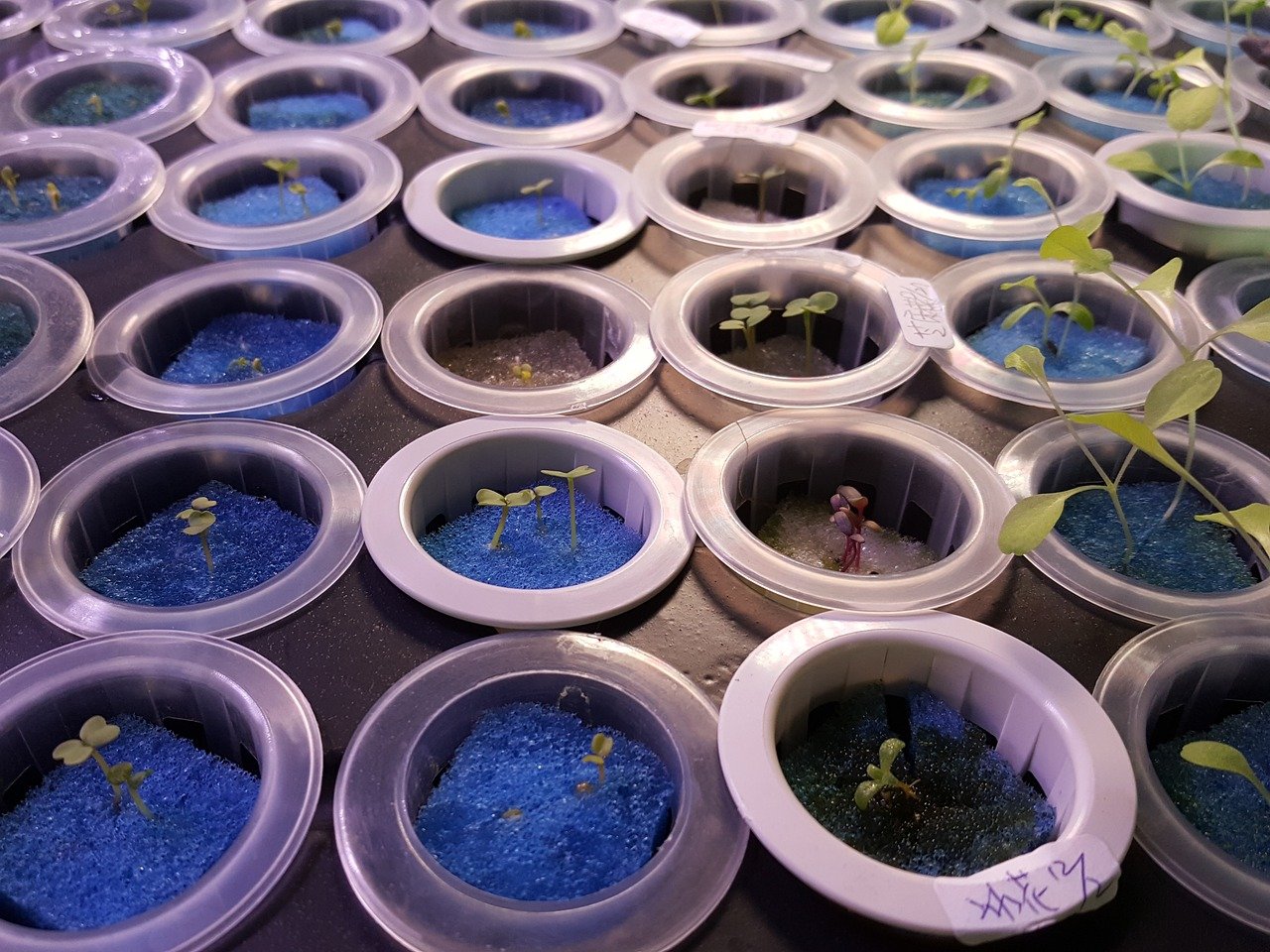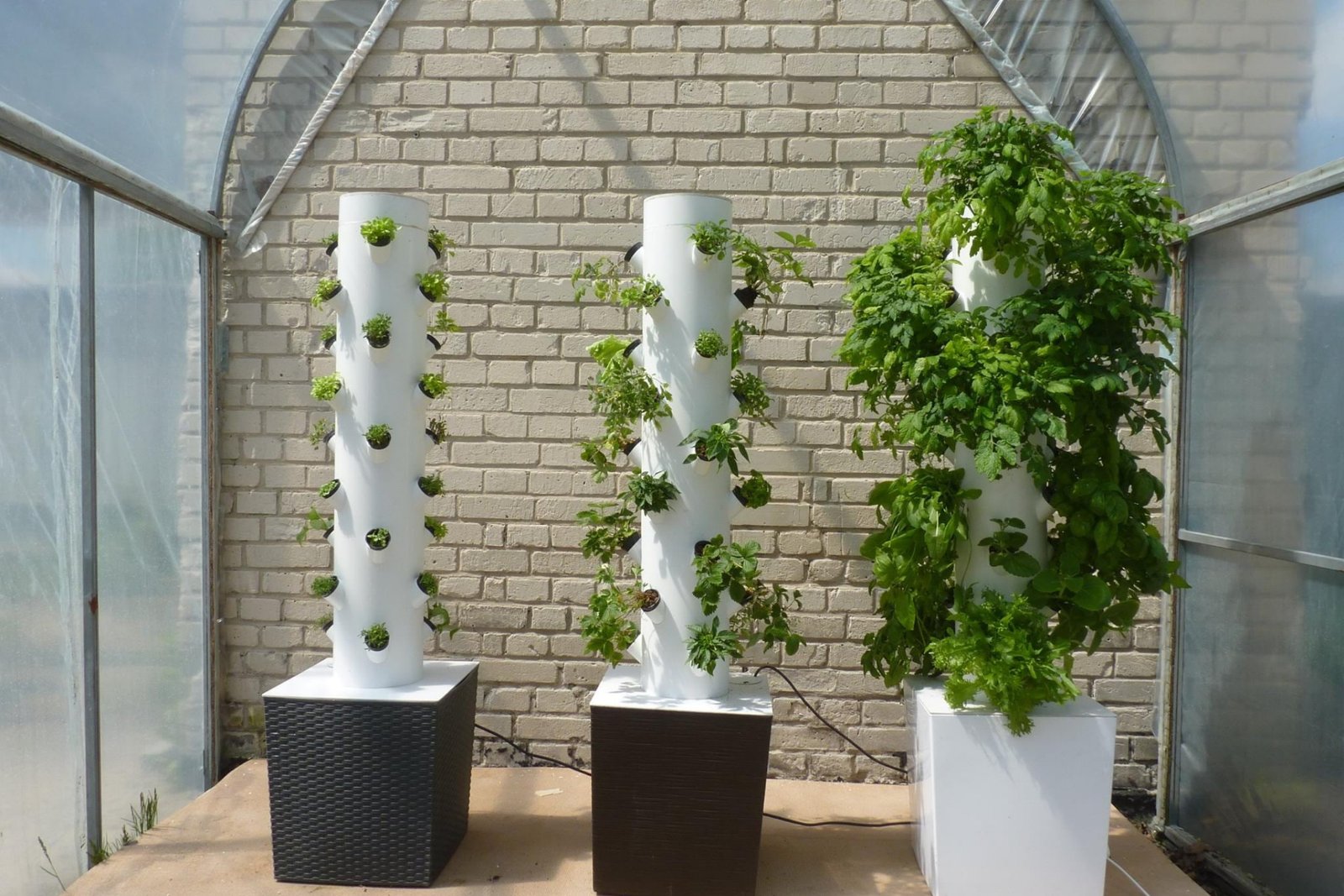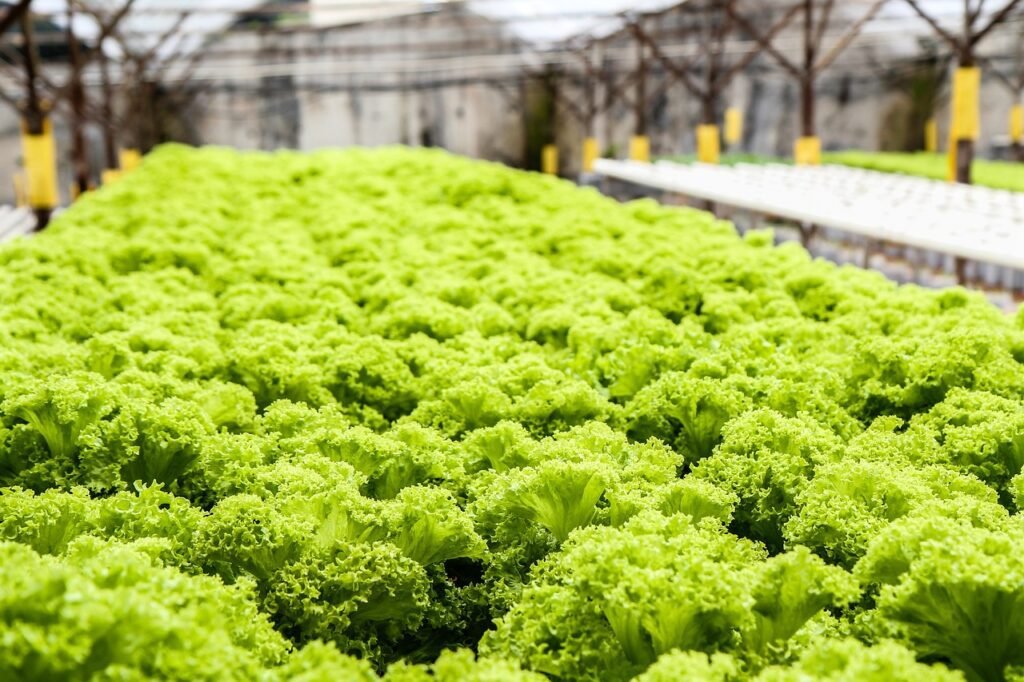Are Hydroponics Worth It?
Introduction to Hydroponics
Hydroponics is an innovative method of growing plants without soil, where mineral nutrient solutions are used in water instead. This technique allows for precise control over the plant’s environment, providing optimal conditions for growth and development.
By eliminating the need for soil, hydroponics presents a range of advantages that have made it increasingly popular among farmers, gardeners, and even home enthusiasts. The basic principles of hydroponics involve providing plants with the essential nutrients they need in their water-based growing medium.
These nutrients are dissolved in water and delivered directly to the plant’s roots in a controlled manner. Additionally, hydroponic systems are designed to ensure proper oxygenation of the root zone, as roots require both nutrients and oxygen for healthy growth.
Definition and Basic Principles
In simpler terms, hydroponics is like a scientific approach to gardening where plants grow without traditional soil. Instead, they thrive on a carefully balanced mix of essential nutrients dissolved in water. The key lies in maintaining an ideal environment that meets the specific needs of different plants.
By adopting hydroponics methods, growers can customize various aspects like pH levels, nutrient concentrations, lighting conditions, and temperature to create an optimized setup tailored specifically for their crops. Moreover,this method allows for year-round cultivation regardless of climate or location limitations.

Brief History of Hydroponics
Although it may seem like a modern innovation, hydroponic systems can be traced back thousands of years. Ancient civilizations such as the Babylonians and Aztecs practiced variations of this technique by cultivating crops using floating rafts on lakes or creating intricate irrigation systems. The formal recognition of modern hydroponics came about during the 18th century when scientists began conducting experiments aimed at understanding plant nutrition.
The first breakthrough in hydroponics occurred in the mid-19th century, when German botanists Julius von Sachs and Wilhelm Knop developed nutrient solutions that allowed plants to grow without soil. Since then, researchers and horticulturists have continued to refine hydroponic techniques, resulting in a wide range of systems available today.
In recent years, the popularity of hydroponics has skyrocketed due to its numerous advantages and potential for sustainable food production. With advancements in technology and increased focus on efficient resource utilization, hydroponics is proving to be an exciting and promising field of agriculture.
Advantages of Hydroponics
Efficient use of water and nutrients
Hydroponics, my friend, is a game-changer when it comes to water and nutrient efficiency. Unlike traditional soil-based farming where plants need to search for water and nutrients amidst the vastness of the soil, hydroponics delivers these essentials directly to the plant’s roots.
It’s like offering a gourmet meal to your greens on a silver platter! This targeted delivery system enables plants to absorb nutrients more efficiently, resulting in accelerated growth and healthier crops.
Comparison with traditional soil-based farming
Let’s delve into a little comparison, shall we? Traditional farming relies on Mother Nature’s whims for success.
Unpredictable weather conditions can wreak havoc on crops. One minute you’re basking in an abundance of rain; the next, you’re experiencing drought-like conditions that leave your precious plants parched.
With hydroponics, my friend, you have control over your plant’s environment. Say goodbye to the unpredictable nature of outdoor farming!
Reduction in water consumption and fertilizer runoff
Water scarcity is becoming more prevalent these days, which means we must utilize every drop wisely. In traditional agriculture, watering vast fields leads to excessive water consumption without guaranteeing optimal absorption by plants. Hydroponics comes swooping in as the eco-friendly superhero it is!
Through precise nutrient delivery and recirculation systems, hydroponics conserves water like a virtuoso violin player conserves each delicate note. Fertilizer runoff?
Yeah, hydroponics tackles that too! Fertilizers used in traditional farming can seep into nearby rivers or lakes through runoff with rainfall or irrigation water.
Not only does this harm aquatic life but it also wastes valuable nutrients that could be feeding hungry plants instead. With hydroponics’ closed-loop system, my friend, fertilizers stay right where they belong – within the plant’s reach.
Year-round cultivation and increased crop yield
Ah, the joys of year-round cultivation! With hydroponics, you’re no longer bound by the limitations of seasons. Whether it’s scorching summer or chilly winter, your crops can thrive in a controlled environment.
The possibilities are endless! No more waiting impatiently for spring to sow your seeds.
And let’s not forget about that increased crop yield, my friend. Hydroponics holds the secret to maximizing your harvests while minimizing space requirements.
Vertical farming systems allow you to stack those plants up high like skyscrapers in a concrete jungle. You’ll be amazed at how much food you can cultivate in a limited area with this innovative technique.
So there you have it – just a taste of the myriad advantages that hydroponics has to offer. Now that we’ve explored the efficient use of water and nutrients, compared it with traditional farming methods, discussed reduction in water consumption and fertilizer runoff, and reveled in year-round cultivation and increased crop yield, I hope you’re beginning to see why hydroponics is worth every droplet of attention it receives!
Types of Hydroponic Systems
When it comes to hydroponics, there are various types of systems that allow plants to thrive without the use of soil. Each system has its own unique characteristics and benefits. In this section, we will explore three popular hydroponic systems: Nutrient Film Technique (NFT), Deep Water Culture (DWC), and Ebb and Flow (Flood and Drain).
Nutrient Film Technique (NFT)
The Nutrient Film Technique (NFT) is a widely used hydroponic system that relies on a shallow channel or tube through which a thin film of nutrient-rich water flows. This film provides a continuous supply of nutrients to the plant roots while also delivering oxygen. The excess nutrient solution is then collected at the end of the channel and recirculated.
The functioning of an NFT system is quite straightforward. The plant’s roots are suspended in the channel, allowing them to come into direct contact with the nutrient solution flowing over them.
This ensures optimal nutrient absorption and root development. As the roots receive constant access to both nutrients and oxygen, they grow rapidly.
NFT systems are particularly suited for leafy greens, herbs, strawberries, and other small- to medium-sized plants with shallow root systems. Their compact size makes them ideal for indoor gardening or spaces with limited room for larger hydroponic setups.
Deep Water Culture (DWC)
In a Deep Water Culture (DWC) system, plants are suspended in net pots above a reservoir filled with aerated water enriched with nutrients. The plant’s roots dangle directly into the water below, absorbing oxygen from air stones submerged in the reservoir. DWC systems are relatively simple to set up as they require only an air pump, air stones or diffusers, and a nutrient solution.
The constant oxygenation of the water promotes robust root growth, leading to healthier and faster-growing plants. While DWC systems excel in promoting plant growth, they may not be suitable for all types of plants.
Leafy greens like lettuce, kale, and spinach thrive in DWC systems due to their compact size and shallow root systems. However, larger plants with extensive roots, such as tomatoes or cucumbers, may require more space and support than what a typical DWC setup can provide.
Ebb and Flow (Flood and Drain)
The Ebb and Flow system (also known as Flood and Drain) involves periodically flooding the growing bed or tray with nutrient solution before draining it away. This alternate flooding and draining cycle ensures that the plant roots receive an ample supply of nutrients while allowing excess water to drain away, preventing over-saturation.
In an Ebb and Flow system, the grow bed is typically filled with a medium such as perlite or coconut coir to support the plants’ stability. When the pump activates, it floods the grow bed with nutrient solution from a reservoir.
Once the desired saturation level is achieved, the pump shuts off, allowing gravity to drain out the excess solution. One advantage of Ebb and Flow systems is their versatility in accommodating various plant types.
They work well for both small-scale home gardens as well as large commercial operations. However, it’s worth noting that managing proper drainage can be challenging at times due to potential clogging or uneven distribution of water across larger setups.

Challenges in Hydroponics
Initial setup costs
When considering hydroponics, it’s important to take into account the initial setup costs. Unlike traditional farming methods that typically rely on soil, hydroponic systems require specialized equipment to provide the necessary nutrients and environmental conditions for plant growth.
You’ll need items such as grow lights, pumps, timers, pH meters, and nutrient solutions. These initial costs can be quite substantial depending on the size and complexity of your hydroponic setup.
Comparing the costs of hydroponics to traditional farming methods is a crucial factor in determining its worthiness. While hydroponic equipment may seem pricey at first glance, it’s essential to consider the long-term benefits.
Hydroponic systems often yield higher crop yields with less water consumption and reduced fertilizer use compared to conventional agriculture. Over time, these factors can offset the initial investment by providing a more efficient and sustainable way of growing crops.
Technical knowledge required
Embarking on a hydroponic journey requires a certain level of technical expertise. Understanding nutrient solutions, pH levels, and other variables is crucial for maintaining optimal plant health and maximizing yields. In traditional farming practices, plants obtain their nutrients from the soil; however, in hydroponics systems rely on nutrient-rich water solutions supplied directly to plant roots.
Ensuring that nutrient solutions are properly balanced is essential for healthy plant growth. Different crops have specific nutritional requirements that need to be met accurately within a controlled environment.
Additionally, monitoring pH levels is critical as it affects how efficiently plants can absorb nutrients. Furthermore, recognizing signs of stress or disease in plants becomes even more important when working with hydroponics since issues can escalate rapidly due to the controlled environment.
Regular monitoring of plant health allows for timely intervention and adjustments in nutrient delivery or environmental conditions as needed. While there are challenges associated with hydroponics, such as initial setup costs and technical knowledge required, these obstacles can be overcome with proper planning and education.
The potential benefits of higher crop yield, efficient water and nutrient usage, reduced pesticide usage, and year-round cultivation make hydroponics a compelling option for modern agriculture. By understanding the intricacies of hydroponic systems and carefully managing plant health, one can harness the full potential of this innovative farming method.
Are the Benefits of Hydroponics Worth the Investment?
Many gardeners believe that the power of hydroponics is definitely worth the investment. The ability to grow plants without soil, conserve water, and produce higher yields makes it a popular choice. In the long run, the benefits of hydroponics outweigh the initial costs.
Environmental Impact
Reduced Pesticide Usage
When it comes to pest control, hydroponics has a clear advantage over conventional agriculture: reduced pesticide usage. In hydroponic systems, pests can be effectively managed without relying heavily on harmful chemicals. Integrated Pest Management (IPM) techniques are commonly employed in hydroponics, which involve using natural predators or biological agents to control pests.
For instance, ladybugs are introduced into the system to prey on aphids, while beneficial nematodes help control root-knot nematodes that can damage plant roots. These natural methods minimize the need for synthetic pesticides that can contaminate soil and water.
On the other hand, conventional agriculture heavily relies on pesticides to combat pests and diseases. The extensive use of chemical pesticides not only poses risks to human health but also contributes to environmental pollution and biodiversity loss.
Runoff from sprayed fields can contaminate nearby water sources and harm aquatic life. By adopting hydroponic systems with their reduced reliance on pesticides, we have an opportunity to protect both our health and the environment.
Energy Consumption in Indoor Hydroponic Systems
Indoor hydroponic systems have become increasingly popular because they allow year-round cultivation regardless of external weather conditions. However, one cannot ignore the energy consumption associated with providing optimal growing conditions indoors. Lighting is a significant factor contributing to energy consumption in indoor hydroponics.
High-intensity artificial lights such as LED or high-pressure sodium lamps are used to mimic sunlight and provide plants with the necessary light spectrum for photosynthesis. These lights consume a significant amount of electricity, contributing to greenhouse gas emissions if derived from non-renewable sources.
Lighting Requirements for Indoor Cultivation
To ensure healthy plant growth in indoor hydroponic setups, adequate lighting is crucial. Different plant species have specific lighting requirements, including light intensity, duration, and spectrum. For instance, leafy greens like lettuce and spinach require around 12-16 hours of light per day with a spectrum rich in blue and red wavelengths.
Fruit-bearing plants such as tomatoes or peppers may need even longer periods of intense lighting. For large-scale indoor hydroponic operations, providing sufficient lighting to numerous plants can become energy-intensive.
However, advancements in LED technology have made it possible to achieve energy-efficient indoor cultivation. LED lights are more efficient than traditional lighting options while allowing precise control over light spectrum and intensity.
Exploring Sustainable Energy Alternatives
To mitigate the environmental impact of energy consumption in indoor hydroponics, exploring sustainable energy alternatives is crucial. Transitioning to renewable sources such as solar panels or wind turbines can help reduce greenhouse gas emissions associated with electricity production. With solar technology becoming more affordable and efficient, integrating solar panels into hydroponic systems is an increasingly viable option.
Solar-powered LEDs can harness the sun’s energy during the day for use during nighttime or low-light periods, significantly reducing reliance on the grid. Furthermore, combining hydroponics with aquaponics (a system that combines fish farming with plant cultivation) allows for greater resource efficiency.
The waste produced by fish is used as a nutrient source for plants in hydroponic setups, reducing the need for synthetic fertilizers while creating a sustainable closed-loop system. By implementing these sustainable energy practices in indoor hydroponics and considering alternative cultivation methods like aquaponics, we can further minimize the environmental impact associated with this innovative farming approach.
Conclusion
Exploring the Future of Hydroponics
As we conclude our discussion on the worthiness of hydroponics, it becomes evident that this innovative cultivation method holds immense potential for the future of agriculture. The advantages offered by hydroponics, such as efficient resource utilization and increased crop yield, make it an attractive option for both commercial farmers and home gardeners. With the ongoing advancements in technology and our growing understanding of plant physiology, hydroponics is poised to revolutionize the way we produce food.
A Sustainable Solution
One of the most compelling aspects of hydroponics is its ability to promote sustainability in agriculture. By eliminating soil dependency and reducing water consumption, hydroponics offers a greener alternative to traditional farming methods.
The reduced use of chemical pesticides further contributes to a healthier environment. As we face challenges such as climate change and land scarcity, adopting sustainable practices like hydroponics becomes crucial for securing our food supply while minimizing ecological impact.
An Exciting Path Ahead
As more farmers adopt hydroponic systems and enhance their understanding of this cultivation technique, we can expect exciting developments in the field. Research into optimizing nutrient solutions, exploring new crop varieties suited for hydroponic growth, and implementing automation technologies will push the boundaries even further. The possibilities seem endless – vertical farms in urban environments, community-led initiatives fostering local food production – all fueled by the ingenuity and passion of those who believe in harnessing nature’s potential.
Yes – hydroponics is undeniably worth it! It allows us to cultivate plants with greater efficiency while preserving resources and reducing environmental impact compared to traditional farming methods.
Through embracing technological advancements and sharing knowledge within this community, we can continue to refine our practices and explore new frontiers in sustainable agriculture. So let’s dive into this exciting world where plants thrive without soil, and the future of food production blossoms.

